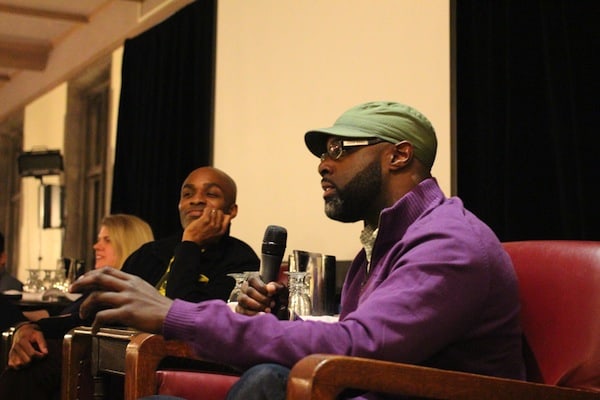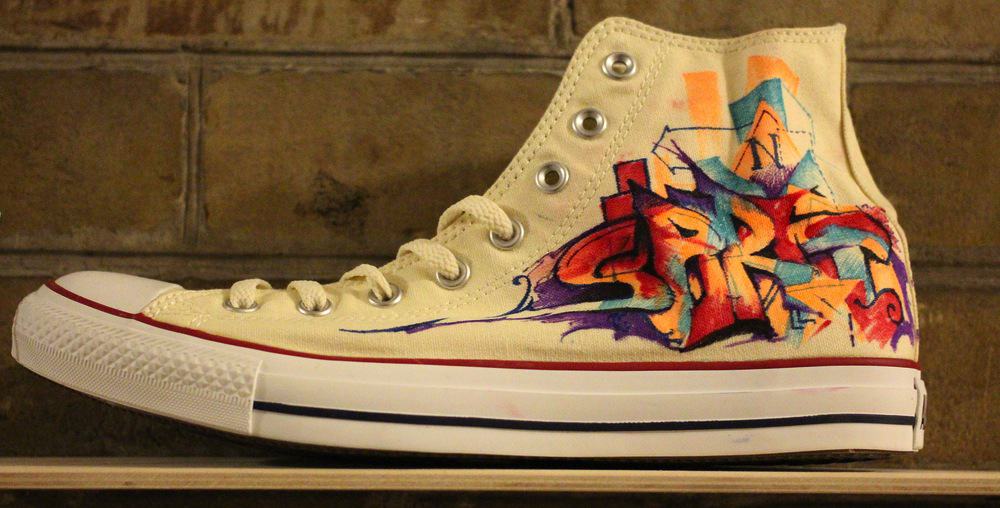“Sneaking into the Big Leagues,” a panel discussion hosted last week at Hart House, did more than highlight sneaker culture’s emergence in mainstream society. It reflected on how a seemingly ordinary item — the sneaker — provides an accessible starting point for examining complex issues, such as gender constructs, economic justice, and racial hierarchies.
Panelist introductions immediately indicated discussion was going to be packed with a variety of critical perspectives.
Elizabeth Semmelhack, senior curator of the Bata Shoe Museum, found it interesting that sneakers reflect changing concepts of masculinity. While society historically expected only women to be concerned with their appearances, the growing sneaker culture represents an increased obligation for men to conspicuously consume fashion.
Dalton Higgins, a journalist often regarded as Canada’s leading expert on hip-hop culture, discussed how sneakers have evolved into a necessity for survival. After travelling to five different continents, Higgins was “disturbed” after seeing a worldwide trend of low-income, poverty-stricken youth killing one another over a pair of the “hottest sneakers.” He identifies this trend as one of the many symptoms of capitalist Western imperialism.
The official discussion began, with moderator Lance McCready, an assistant professor of Urban Education at the Ontario Institute for Studies in Education, questioning whether the Bata Shoe Museum was an appropriate place to host an exhibition on sneaker culture. This is in light of the exhibit, Out of the Box: The Rise of Sneaker Culture that is currently going on at the museum until the end of May.
The panel also considered the importance of the Bata Shoe Museum in educating the public about sneakers as central to our society’s historical narrative and crucial to sustaining our economy. Other comments suggested that the mainstream absorption of counter culture sometimes signifies the “death” of that counter culture’s importance, as the subversive origins of the culture are ignored. Cultural appropriation and Macklemore’s recent Grammy wins in the Rap category were duly noted.

On the issue of social identity, U of T student panelist Brian Kuo spoke about his first pair of Air Jordan N1 basketball shoes as a symbol of rebellion against his coach. Kuo also alluded to the psychology behind consumption — paying hundreds of dollars for one pair of shoes makes little economic sense, but wearing sneakers that athletes like Michael Jordan endorse invokes a feeling of acquiring said athlete’s work ethics.
Dion Walcott, co-founder of community movement Toronto Loves Kicks (TLK), brought a more hopeful perspective regarding sneaker culture’s largest beneficiary. He acknowledged capitalist corporations exploit consumers by perpetuating sneaker hype — nevertheless, his experience working with marginalized communities show him that sneakers provide a “window into youth culture,” acting as a conversation starter and basis for forging meaningful relationships.
Despite occasional clashing views, the discussion’s atmosphere remained accepting, cordial, and safe for expressing all contention — attendees included. This was most aptly exemplified when an attendee stood up to say: “sneaker culture is kind of a joke.” His nearly 10-minute long argument was permitted and thoughtfully responded to by the panelists.
As part of the Pan Am games umbrella for Hart House, this panel discussion succeeded in its goal to present sneakers, like the Pan Am Games themselves, as a platform for the celebration and the critical analysiss of identity and diversity.
On March 12, a similar event, “I Got Sole” will be held at the University of Toronto Scarborough Campus (UTSC).


